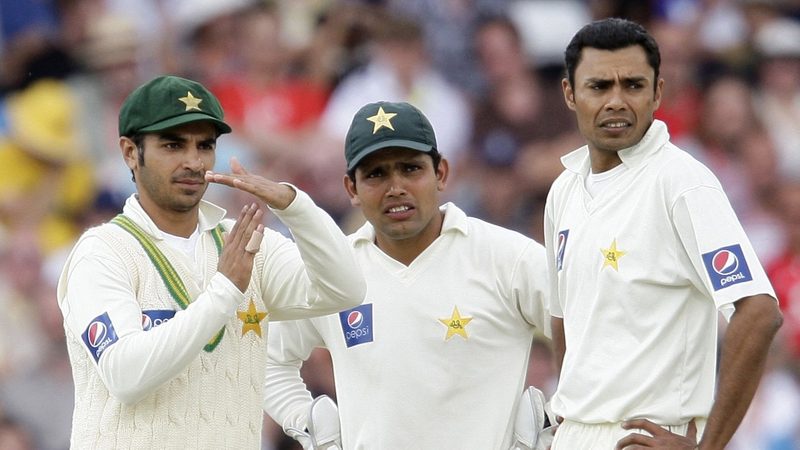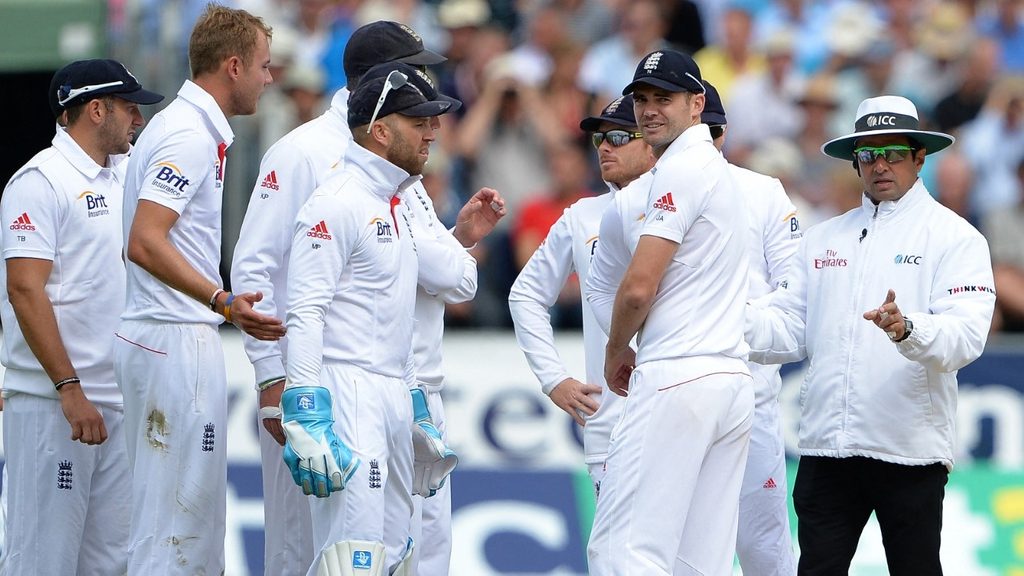
India’s third Test against South Africa was marred by DRS controversy when Dean Elgar’s LBW decision was overturned.
During the 21st over, Ravichandran Ashwin caught Dean Elgar plumb in front of the stumps and what looked like an easy leg before wicket decision was later overturned after ball-tracking showed the delivery just flew over the stumps. Not only was the Indian cricket team in shock but even the on-field umpire Marais Erasmus was heard as saying, “that is impossible” on the stump mic.
What is DRS in cricket?
Decision Review System, or DRS in cricket, is a technology-based review system that was established in 2008 to assist the on-field umpires. The main idea was to get the result with utmost accuracy and transparency.
The first-ever match to be played with DRS was India’s Test series against Sri Lanka in 2008, with Virender Sehwag going down as the first-ever player to be given out under the review system.
Since then, the review technology has come a long way as the International Cricket Council (ICC) has made several tweaks, including widening the frame of contact between ball and the stumps in LBW decisions.
While DRS has been in Test cricket since 2008, it was only introduced in the 50-over format in 2011 followed by the induction in Twenty20 Internationals in 2017.
Note that when a team opts for a DRS, they are basically challenging the on-field umpire’s decision. The third umpire eventually checks the incident with all the components he has, which includes slow-motion cameras, infra-red cameras, edge detection and ball tracking.
A team can only opt for a DRS when the on-field umpire has given his decision. The challenging team has 15 seconds to make a decision of whether to go for a review or not.

To do so, the captain of the challenging team needs to signal a ‘T’ sign within the stipulated time and if the umpire thinks the request was made beyond that, he has the right to revoke the request.
Furthermore, if the umpire thinks the challenging team has received intel from someone who is not on the field, they have the right to decline the review request and the players cannot query the umpire’s ruling.
Steps involved in DRS
Once the decision has been referred to the third umpire, he/she checks whether it was a fair delivery, which basically means checking if the bowler has overstepped. If the delivery is fair, the umpire moves on with other components depending on the kind of dismissal.
For example, if an appeal for an LBW has been called, the third umpire will check the ultra-edge to see whether the ball has touched the bat or not. If nothing substantial comes up, the umpire proceeds to check the hotspot. Once that’s done, the umpire sees through the hawkeye view to track the ball and see the impact of the delivery, its trajectory and where it was pitched.
If the ball is pitched in line with the stumps and is projected to go on and hit the wickets, the decision is out and vice versa.
What is umpire’s call in DRS?
Calling out for a perfect DRS decision can be tricky at times as the point where the ball hits the stumps plays a major role. To overcome that, the ICC introduced the ‘Umpire’s Call’ to give the benefit of doubt to the on-field umpire’s decision.
Umpire’s call means that the on-field umpire’s decision is withheld for the leg-before-wicket (LBW) decision that was challenged and reviewed. This is done once the third umpire uses ball-tracking to see the impact of the delivery on the stumps. If it is marginal, the original decision stays.
In marginal decisions where the ball is predicted to clip the edge of the leg or off-stumps, conclusive evidence - ball tracking - must show more than 50 per cent of the ball hitting the stump for an on-field decision of an out to be upheld. For a player to be given out, the ball must pitch in line or outside the off stump and the ball should clearly hit the wicket.
As per ICC, “Umpire’s Call is the concept within the DRS under which the on-field decision of the bowler’s end umpire shall stand, which shall apply under the specific circumstances set out in paragraphs 3.4.5 and 3.4.6 of Appendix D, where the ball-tracking technology indicates a marginal decision in respect of either the Impact Zone or the Wicket Zone.”
Note that in case of an umpire's call, the team that asked for a review does not lose the review.
It’s given that the technology cannot be 100 per cent accurate and hence the ball-tracking can have its downside too. It is widely accepted that hawk-eye and ball-tracking has a margin of error from 2.2 mm to 10 mm.
It is important to note that the technologies used in DRS are provided by certain ICC-approved vendors and they, in fact, work independently. For example, the ball-tracking system is provided by a company called Virtual Eye and HawkEye Innovations.
Meanwhile, sound-based tech is provided through Real-Time Snickometer, provided by BBG Sports, and UltraEdge by HawkEye. BBG Sports is also responsible for providing heat-based edge detection.
The LED wickets, on the other hand, come from Zing Bails and Stumps.
DRS controversies
There have been several instances of controversies surrounding the DRS in the past.
In 2013, England batsman Joe Root was given out off Shane Watson’s delivery. The on-field umpire, Marais Erasmus raised the finger as he thought the England batter had caught an edge. Root took a review and there were no signs of an edge on the hot spot.
The ultra edge, however, showed minor vibration. Since there was no conclusive evidence that whether the ball has actually clipped the bat or not, the third umpire went with the original decision and Root was given out.
Back in 2015, an error by TV umpire Paul Reiffel cost Pakistan the wicket of Sri Lanka’s Kaushal Silva.
Silva was originally given not out by the on-field umpire S. Ravi off the bowling of Zulfiqar Babar as Pakistan were convinced of a possible bat-pad catch to slip. Captain Misbah ul-Haq decided to go for the review and Paul Reiffel only checked for the catch appeal and not for an LBW. As it turned out, Silva would have been dismissed if Reiffel had checked for LBW.
Author: Swapnil Bhopatkar
Follow us on Telegram for the latest updates from the world of sports!
Featured photo: AFP / Ian Kington













